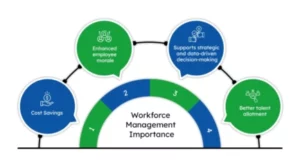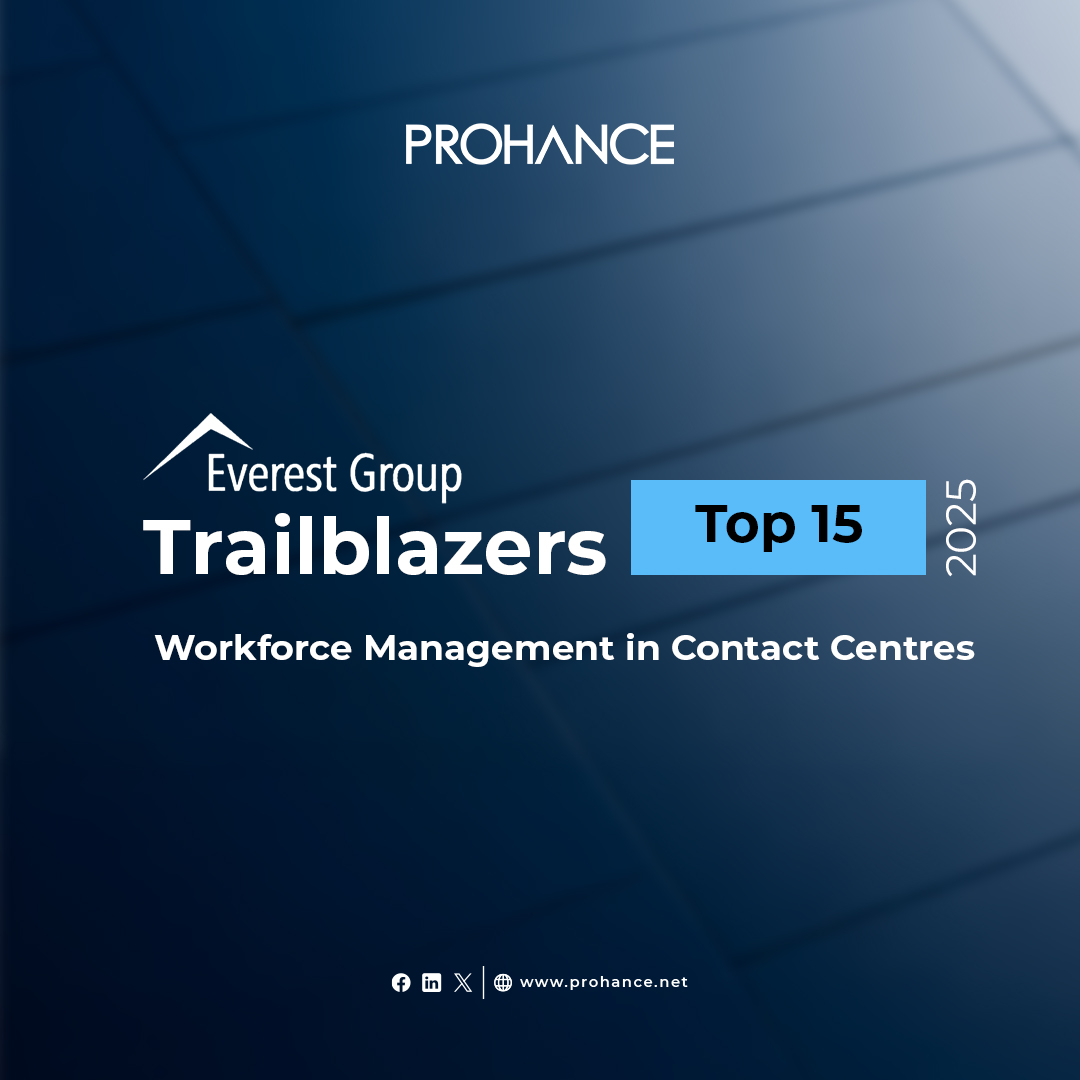Top 5 Benefits of Data-Driven Decision-Making in Workforce Management
Table of contents
-
- What Is Data-Driven Decision-Making?
- Why Data Matters: The Nuts and Bolts of Smarter Choices
- Key Metrics & KPIs Redefining Workforce Management in 2025
- Top 5 Advantages of Utilizing Data in Your CCM Work Management Decision Processes
- How ProHance Makes Data-Driven Decisions Effortless?
- The Bottom Line
- Frequently Asked Question
Let’s face it, today, managing a workforce seems to be as cumbersome as working on a puzzle with a blindfold on. Even professional managers find it difficult to keep teams engaged due to the hassles of scheduling issues and the inconsistencies in retention levels and productivity.
But what if you could take the blindfold off? This is where the essence of data-driven decision-making comes into play. Businesses can malfunction and suffer great losses when they rely solely on futile assumptions rather than strategizing leveraging the value hidden within the numbers.
This blog discusses the five most important benefits of data-driven decision-making, especially regarding workforce management, how ProHance simplifies such procedures, and shares real-life case studies. Let’s go!
What Is Data-Driven Decision-Making?
Data-driven decision-making (DDDM) means using facts, metrics, and analytics—not gut feelings—to guide business choices. In workforce management, this could mean:
- analyzing attendance patterns to optimize schedules,
- tracking productivity trends to allocate resources,
- predicting turnover risks to improve retention.
It’s like having a GPS for your team. You don’t have to estimate the quickest path. You simply observe traffic conditions and adjust accordingly. By employing data-based approaches, your actions are not a response to issues. Instead, you’re proactively addressing problems.
Why Data Matters: The Nuts and Bolts of Smarter Choices
Before we explore the benefits, let’s address the importance of data for decision-making:
- Accuracy: Data minimizes biases (e.g., favoring a star employee who’s burning out).
- Speed: Real-time dashboards let you act fast—like adjusting schedules during a demand spike.
- Accountability: Clear metrics make expectations tangible, from productivity targets to ROI.
Now, let’s see how this plays out in practice.
Key Metrics & KPIs Redefining Workforce Management in 2025
Workforce management in the modern world relies heavily on data, and tracking the right metrics is therefore important. KPIs serve not only to gauge performance but also have the potential to shape business decisions, productivity levels, and the overall wellness of employees. Below, we demonstrate metrics that are considered vital in workforce management for the year 2025.
Recruitment & Retention Metrics
| Time-to-Hire: | Average number of days taken to fill a position from the date of the job posting to when the offer is finally accepted. |
| Employee Turnover Rate: | Percentage of employees leaving the organization within a period. High turnover signals issues like poor engagement or leadership. Replacing an employee costs up to 2x their salary, making retention critical. |
| Cost Per Hire: | Total recruitment expenses divided by the number of hires. |
Productivity & Performance Metrics
| Employee Productivity Rate | Output (e.g., tasks completed) divided by hours worked. |
| Time-to-Productivity | Days for a new hire to reach full efficiency. |
| Employee Net Promoter Score (eNPS): | How willing are employees to refer to the company as a potential employer? Firms with higher NPS have
|
Employee Well-being & Culture Metrics
| Absenteeism Rate: | Percentage of unplanned absences. High rates often indicate burnout. Wellness programs can reduce absenteeism. |
| Diversity & Inclusion Index: | Measures representation of underrepresented groups. Diverse teams deliver higher returns, yet only a few companies track this KPI effectively. |
| Employee Health & Wellness Participation: | Percentage of employees in wellness programs. |
Future-Readiness & Compliance Metrics
| Internal Mobility Rate: | Percentage of employees transitioning roles internally. Employees remain 41% longer in companies with high internal mobility rates. |
| Skills Gap Analysis: | Discrepancy between current skills and future needs. |
| Workforce Analytics Utilization: | Frequency of data-driven decisions in HR. Firms using real-time analytics resolve issues faster and reduce compliance risks. |
Top 5 Advantages of Utilizing Data in Your CCM Work Management Decision Processes
Understanding which data is relevant for your institution is only the initial stage. Now, let us assess the advantages of making decisions based on data:
- Benefit #1: Increase Productivity by Eliminating Irrelevant Tasks
- Benefit #2: Decrease Expenses While Retaining the Standard.
- Benefit #3: Predict Turnover Before It Happens
- Benefit #4: Forecast Workforce Needs Like a Pro
- Benefit #5: Create Fair, Transparent Performance Reviews
Benefit #1: Boost Productivity by Cutting the Fluff
Ever wondered how much time your team spends on repetitive tasks or inefficient processes? Data-driven decision-making software like ProHance uncovers these hidden drains.
Predictive analytics reduces employee turnover by 20% by identifying attrition risks early.
Example:
A logistics company used ProHance’s activity tracker to discover that warehouse staff spent 27% of their time manually updating spreadsheets. By automating data entry with ProHance’s integrations, they reclaimed 300+ hours monthly—equivalent to hiring four extra employees.
How ProHance Helps:
- Task-Level Analytics: See which activities eat up time (e.g., excessive meetings vs. core work).
- Real-Time Alerts: Flag underperforming workflows before they stall projects.
Benefit #2: Slash Costs Without Sacrificing Quality
Labor costs consume 70% of a company’s budget, but data reveals where every dollar is wasted. Data-driven scheduling minimizes understaffing/overstaffing, saving enterprises up to 18-20% in operational costs.
Example:
A retail chain analyzed sales and foot traffic data with ProHance to align staff schedules with customer peaks. Result? A 22% drop in overtime costs and a 15% boost in sales during peak hours.
How ProHance Helps:
- Budget Forecasting: Predict labor needs to avoid overstaffing slow days.
- Overtime Insights: Identify departments habitually exceeding budget and address root causes.
Benefit #3: Predict Turnover Before It Happens
Replacing an employee costs up to 2x their salary, but data can spot flight risks early. HR teams using predictive analytics achieve 65% accuracy in attrition forecasting.
Example:
A tech firm used ProHance’s engagement metrics (e.g., task completion rates and collaboration patterns) to flag disengaged teams. By offering targeted training and flexible schedules, they reduced annual turnover by 34%.
How ProHance Helps:
- Sentiment Analysis: Track engagement through productivity trends and peer feedback.
- Retention Dashboards: Highlight at-risk employees based on historical patterns.
Benefit #4: Forecast Workforce Needs Like a Pro
No longer do you have to look for resources during peak seasons? With forecasting based on data, you are always prepared.
Predictive workforce planning tools forecast staffing needs 12 months in advance with 85% accuracy. Skills-based hiring (vs. traditional credentials) improves retention by 34%.
Example:
A healthcare provider used ProHance’s historical patient data to predict ER demand during flu season. By pre-scheduling extra nurses, they reduced wait times by 40% and improved patient satisfaction scores.
How ProHance Helps:
- Demand Prediction: Use past performance and market trends to model future staffing needs.
- Skill Gap Analysis: Identify which roles to hire or upskill for upcoming projects.
Benefit #5: Create Fair, Transparent Performance Reviews
Subjective evaluations breed resentment. Data removes the bias. Companies with continuous development programs report 41% higher retention.
Example:
A sales team shifted from manager-led reviews to ProHance’s performance metrics (e.g., calls made, deals closed, client feedback). Disputes dropped by 60%, and top performers felt recognized.
How ProHance Helps:
- 360-Degree Insights: Combine quantitative data (task output) with qualitative feedback.
- Custom KPIs: Align metrics with company goals, like customer satisfaction or innovation.
How ProHance Makes Data-Driven Decisions Effortless?
ProHance is more than just another analytical application. It provides a multitude of services for workforce management. Here’s how it works.
- Centralized Dashboards: Help to track productivity, cost, and engagement all in one place.
- AI-Powered Predictions: Get alerts about turnover risks or budget overruns before they blow up.
- Compliance Safeguards: Automatically anonymize sensitive data to protect privacy.
Case Study:
A global BPO reduced operational costs by 18% in 6 months. It used ProHance to balance workloads across 5,000+ employees.
Also Read: What is Data Culture? 7 Pillars & Its Impact on Success
The Bottom Line
Data-informed decision-making is not a fancy word used by elite corporations. It is now the future of managing a workforce. ProHance makes it easier than ever to enhance productivity and predict turnover. The benefits of data-driven decisions are countless and with ProHance you don’t need extensive data science education.
Ready to transform your workforce strategy? Explore ProHance today and turn your data into your greatest asset.
Frequently Asked Question
Q1. How do I start with data-driven decision-making if I’m new?
Begin small! Use ProHance’s pre-built reports to track basic metrics like attendance or task completion. Gradually expand to complex analyses as your team adapts.
Q2. What’s the biggest mistake companies make with data?
Overcomplicating it. You should maintain your focus on 3–5 main metrics that align with your business goals.
Q3. Can data-driven tools like ProHance work for small teams?
Yes. ProHance is ideal for a startup having 10 members to enterprises having 10,000+ employees.
Q4. How long until we see results after implementing ProHance?
Most teams notice improvements in 30–60 days. For example, one client cut scheduling errors by 50% in 6 weeks.
Q5. Does ProHance comply with data privacy regulations?
ProHance complies with GDPR, CCPA, and other necessary regulations. Data is encrypted, and employees can access their metrics for transparency.





